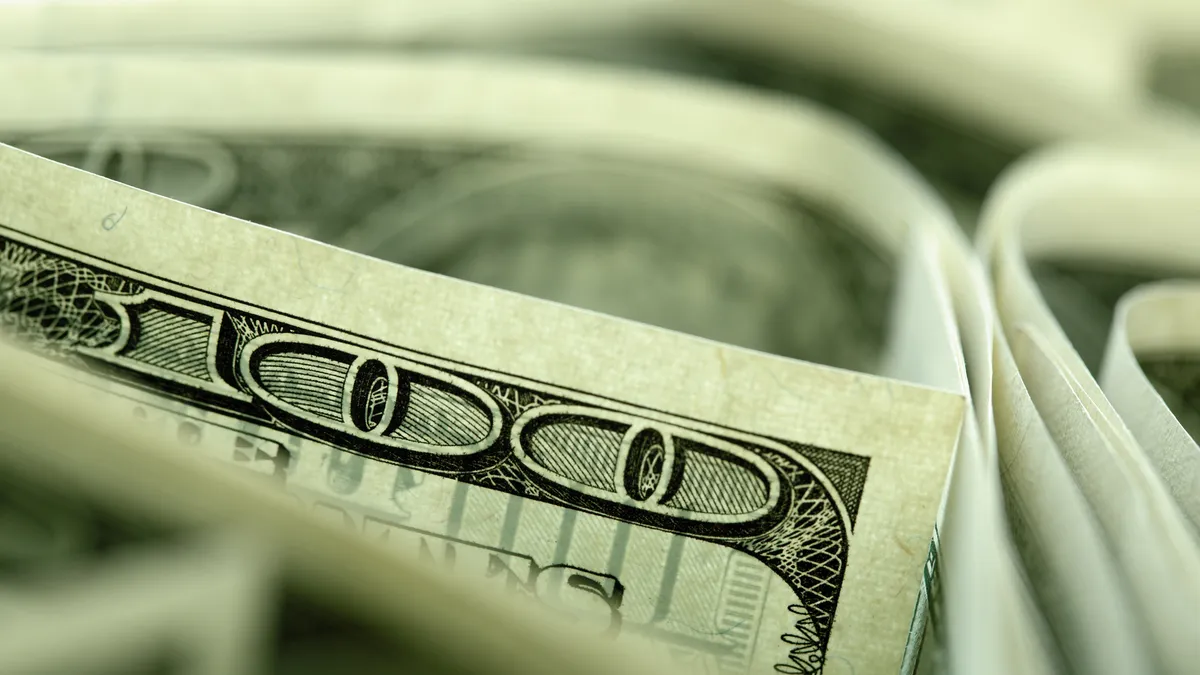Dive Brief:
- The number of loans approved in the Paycheck Protection Program (PPP), the speed with which they were processed, and limited safeguards leave the program open to "significant risk that some fraudulent or inflated applications were approved," a Government Accountability Office (GAO) report said Thursday.
- A lack of clear guidance also made it more likely that borrowers may misuse loan funds or be surprised they don't qualify for full loan forgiveness, the agency wrote.
- The Small Business Administration (SBA) is set to stop taking new loan applications for the program Tuesday. About $517 billion in loans has been approved since the program launched April 3, but that leaves well over $100 billion available in the $670 billion effort.
Dive Insight:
The GAO, in its 392-page report, addressed flaws by several agencies regarding the federal response to the coronavirus pandemic. It identified "incomplete and inconsistent data" on viral testing, which made it more difficult for the Centers for Disease Control and Prevention to track infection rates. It also noted the IRS and Treasury Department paid out nearly $1.4 billion in stimulus checks to people who had died.
In particular, the watchdog cited PPP's lack of safeguards — such as a streamline in the loan underwriting process allowing lenders to rely on borrower certifications and supporting payroll documentation — as a fraud risk.
It also noted a "lack of timely and complete guidance" from the SBA. The agency delivered 18 interim final rules and 17 updates to its "frequently asked questions," as of June 15, the GAO found.
In its most recent tweaks, the SBA has trimmed its PPP loan forgiveness application and promised to disclose recipients of PPP loans worth $150,000 or more.
But perhaps the most impactful change to the program came from Congress, not the SBA. A bill signed into law by President Donald Trump this month tripled the time frame during which recipients can use PPP loan funds and reduced to 60% from 75% the proportion of funds that must be dedicated to payroll.
Despite PPP's focus on job preservation, about 14% of small business owners who received a loan through the program expect they'll still lay off employees after using up their loans, according to a survey published this week by the National Federation of Independent Business.
The GAO took the SBA to task on its transparency, too — citing the agency had not provided further details, as of June 15, as to how it would review loans of $2 million or more. Those loans make up 21% of the program’s total lending power thus far, the GAO said. Neither, the watchdog added, has the SBA shared information on oversight plans for the more than 4 million loans under that amount.
The watchdog recommended that the SBA develop and implement plans to address potential fraud, achieve effectiveness, and identify and respond to risks in the program to ensure its integrity.
An SBA spokesman said the report "minimizes the historic work that SBA has undertaken to implement the CARES Act and mischaracterizes SBA’s engagement with GAO," Jim Billimoria told The Wall Street Journal.
The GAO said the SBA didn't fully comply with its requests to provide interviews and "to date has failed to provide information critical to our review, including a detailed description of data on loans made."
Billimoria, however, said the SBA made senior officials available for interviews, produced hundreds of pages of documents, and continues to provide additional information to the GAO, including loan-level data on PPP loans made to date.
The GAO also noted that about $38.5 billion in PPP loans had been canceled as of May 31.
In a recent interview with The Wall Street Journal, Treasury Secretary Steven Mnuchin said flaws in PPP were largely unavoidable.
"If you want to do something at large scale that helps the economy, it can't be perfect in every micro fashion," he said.











